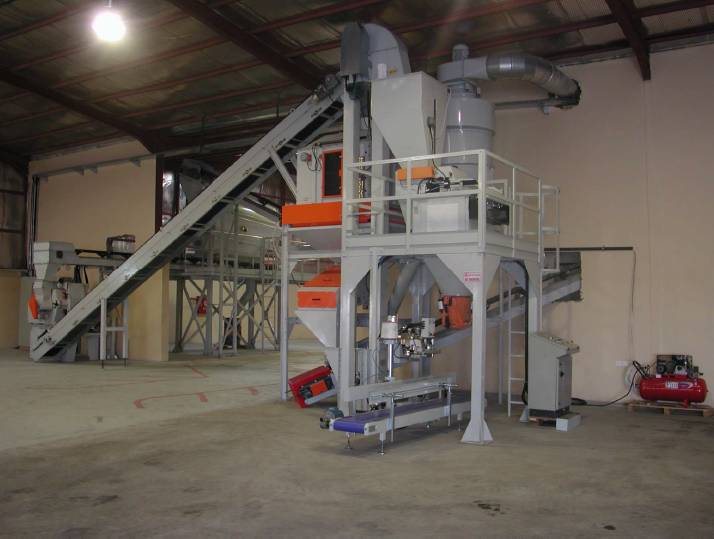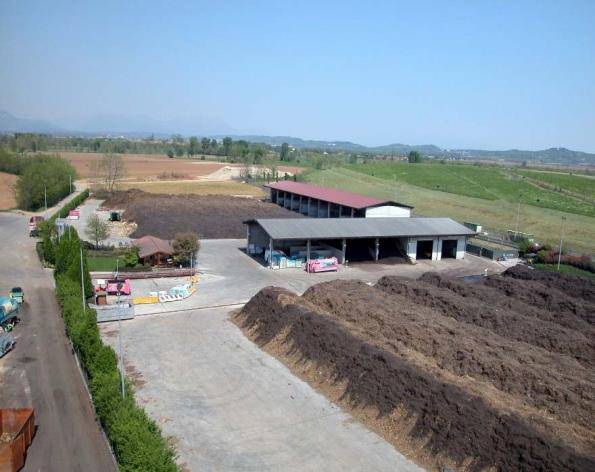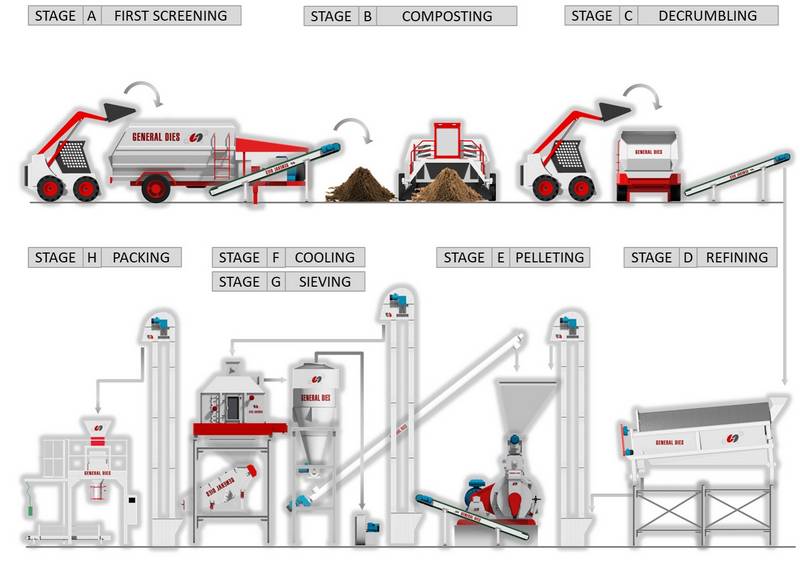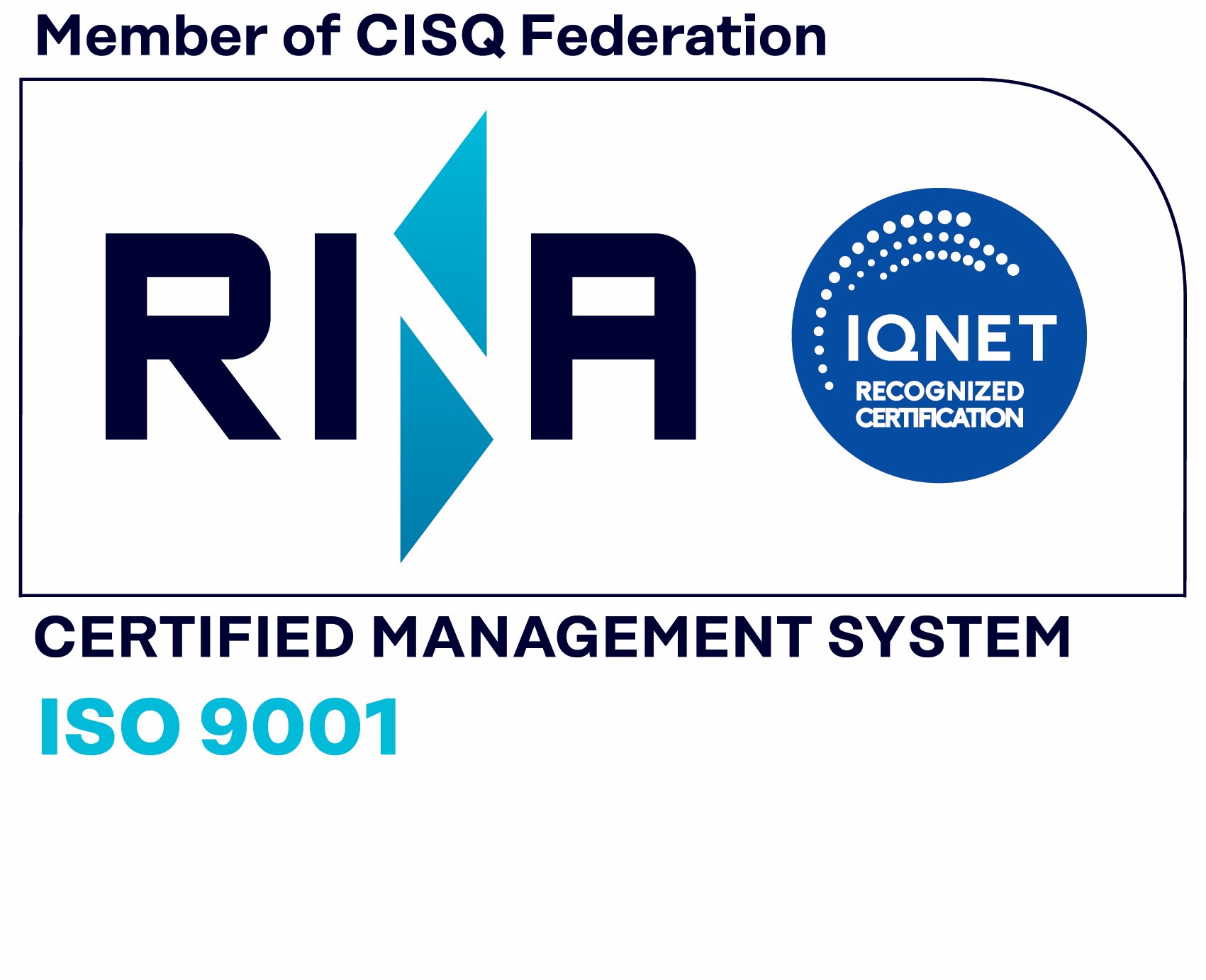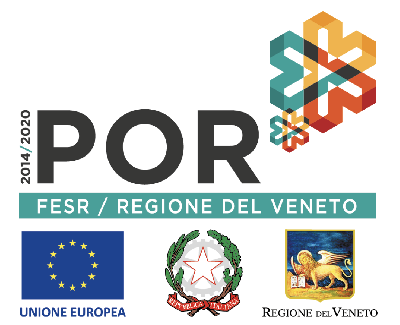PHASE ‘A’: FIRST SCREENING
This phase is necessary as it is a first screening and cleans the raw material of stones, metal pieces, wood, feathers etc. The machine can be of the rotating drum type or belt type.
PHASE ‘B’: COMPOSTING
The composting process is done outdoors where the product is accumulated on piles and are periodically turned by a mechanical turning machine, in order to obtain the correct drying and fermentation.
PHASE ‘C’: CLUMP SELECTING
A self-propelled machine is positioned close to the product in order to being transported to the production line. It takes out the clumps and mixes the product.
PHASE ‘D’: REFINING
The machine consist of a rotating drum part in which the product is forced out through grids with holes with the desired dimension and cleaned of undesired parts in the product.
PHASE ’E’: PELLETING
The material is entering in the pellet mill passing through the conditioner. Here other ingredients could be added, before the material goes into the pellet pressure chamber to be transformed into pellets by the die. On the outside of the holes some knives cut the pellets at the desired length.
PHASE ‘F’: COOLING
After pelleting, the product is very hot, therefore it’s necessary to cool the product at approximately +5°C in respect to the room temperature, in order to give it the right hardness and the best consistence to store and handle it.
PHASE ‘G’: SIEVING
In this phase the product is cleaned from the dust, which is brought back into the production cycle.
PHASE ‘H’: PACKAGING
The pelleted product is conveyed to the silo for storage before delivery.
It can be delivered in bulk, loaded on trucks or packed in sacks or big-bag. The machines for packaging could be manual, semi-automatic or automatic, based on the requested production.
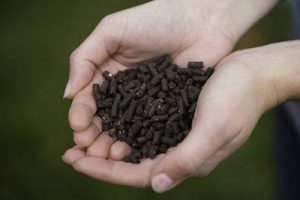 We offer complete plants and pelleting lines for the treatment and production of compost pellets.
We offer complete plants and pelleting lines for the treatment and production of compost pellets.
